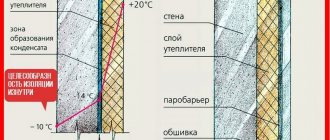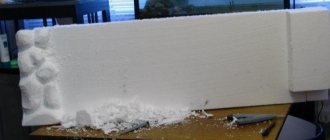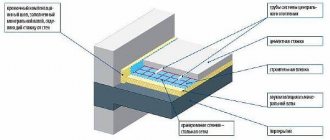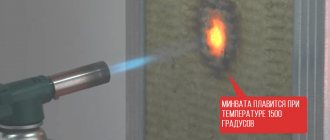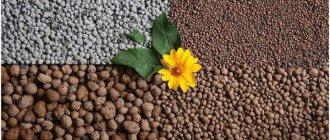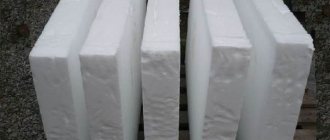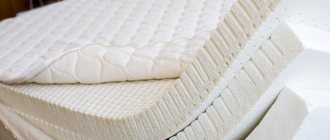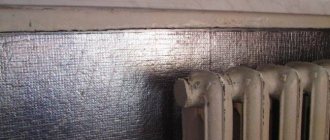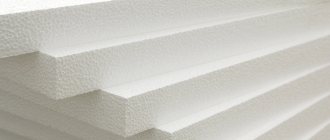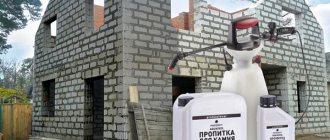The degree of efficiency of heat conservation in the home depends on this parameter. On the modern market, the choice of this material is quite large. For each type there is a special marking that helps the buyer decide on its thickness and density.
But in order to make the right choice, you first need to correctly calculate all the foam parameters that are suitable specifically for your home.
What you need to know
Foam plastic tolerates moisture well.
Before starting work on arranging thermal insulation for a house, it is necessary to think through some points so that you do not have to correct mistakes later. First we define:
- what material to use;
- size of the thermal insulation layer;
- insulation method: internal or external.
There are many materials for these purposes, but one of them is polystyrene foam. This building material copes with all the tasks quite well. It can be used for both external and internal work.
Most often it is used for external insulation of home walls.
What is external wall insulation with foam plastic?
This technology involves gluing and attaching the insulation to the wall, after which all joints are sealed and a protective layer is applied. Often, a special glue with a nylon mesh is used as a protective layer, after which plaster can be applied. Schematically it looks like this:
And the thermal conductivity of this layered “pie” depends on both the thickness of the wall and the foam.
Main characteristics
The building material polystyrene foam consists of polystyrene foam balls, which are pressed together, and air. Its main characteristics include:
- absolutely non-toxic, successfully used not only in the construction industry, but also in the manufacture of packaging for household appliances and in the food industry;
- does not lose its qualities over time;
- has a high degree of resistance to moisture, the formation of fungus and mold;
- quite high degree of thermal insulation properties;
- has low weight, which ensures ease of installation;
- It is very easy to give the desired dimensions.
Along with the advantages, there is a significant drawback. This material burns well, releasing toxic materials that are very dangerous to human health. This fact should be taken into account when insulating walls with foam plastic.
What thickness of polystyrene foam should I choose for wall insulation?
Of course, the thinner the wall of the house, the thicker the foam you need to use. Now we will present the minimum indicators that are provided in accordance with building codes.
Let's consider for cases when the wall material is brick. Namely: when the wall thickness is 250 mm (one brick), 380 mm (one and a half bricks) and 510 mm (2 bricks).
The dependence is shown in the graph:
It can be seen that for a wall t=250 mm, polystyrene foam with a thickness of 40 mm can be used. For t=380 mm - 38 mm foam, for t=510 mm - 32 mm thick insulation.
Based on the nature of the curve presented, you can easily determine the minimum requirements (approximate) for your case.
Foam thickness
An insufficient layer of insulation can lead to a shift in the dew point.
As has already been said, the quality of thermal insulation is very significantly affected by the thickness of the foam used to insulate the wall from the outside. After all, if the insulation layer is not thick enough, then the structure may freeze during the cold season. This is fraught with a shift of the “dew point” inside the home, and, consequently, increased humidity and fogging of windows and walls.
Many novice builders believe that the thicker the foam, the better. This is a mistaken opinion, since there are also nuances here. For example, the desired effect will not be achieved, and material costs will increase significantly.
The best way is to correctly calculate the optimal insulation thickness. In this case, it is necessary to take into account the building material used in the construction of the home and the climate.
Insulation will save on energy costs
The listed advantages will tell you how to choose polystyrene foam:
- significant reductions in costs, material itself and installation work;
- saving heat on energy resources;
- there is no need to use additional heating devices, which also saves the family budget;
- by insulating walls with polystyrene foam, you can reduce the thickness of walls made of the main building material;
- stabilization of the temperature in the room;
- achieving the state of ecology of the building;
- increasing the service life of the building, since foam plastic will reliably protect the walls from the influence of climatic factors.
What is foam plastic
For the first time, the production of foamed organic substance styrene was established by the American concern BASF in 1951. The material called “styrofoam” consisted of 98% air filling the cells of the foam base, which gave it low thermal conductivity, water absorption and vapor permeability.
The technology was improved, and extruded polystyrene foam appeared - self-extinguishing foam. Also, the current insulation material contains antifungal additives.
The quality and technical characteristics of foam plastics in Russia are declared by GOST 15588–2014 “Heat-insulating polystyrene foam boards. Technical conditions". Instead of the usual PSB markings and corresponding markings, the Russian Federation now has EPS markings, and expanded polystyrene itself is divided into cut (P), cut graphite-containing (RG) and thermoformed (T). Boards intended for use in insulating facades using plasters are additionally marked with the letter F.
According to this document, the technical characteristics of slabs for facade work are as follows:
| Indicator name | The value of the indicator for brand slabs | ||
| PPS16F R | PPS15F RG | PPS20 F RG | |
| Density, kg/mcub., not less | 16 | 15 | 20 |
| Compressive strength kPa | 100 | 70 | 100 |
| Bending strength, kPa, not less | 180 | 140 | 250 |
| Tensile strength kPa, not less | 100 | 100 | 150 |
| Thermal conductivity in dry condition, condition A, °C (283 K), W/(m×K), no more | 0,036 | 0,032 | 0,031 |
| Thermal conductivity in dry condition, condition B, °C (298 K), W/(m×K), no more | 0,038 | 0,034 | 0,033 |
| Humidity,% no more | 2,0 | 2 | 2 |
| Water absorption in 24 hours, % of volume, no more | 1,0 | 4 | 3 |
| Self-combustion time, s, no more | 1 | 1 | 1 |
PLEASE NOTE: façade insulation should only be done with slabs marked F.
How to determine thickness
The thermal resistance of the material (R) plays a significant role in calculating the thickness of polystyrene foam. The quality of the building’s thermal insulation depends on it. This value is individual for each region. Some of them can be viewed in the table presented.
If the walls consist of several layers, then it is necessary to summarize the thermal resistance indicators for each material.
The thickness of the foam is calculated by multiplying the thermal resistance and thermal conductivity, which can be found in the table.
Calculation of the required insulation thickness
The thickness of the insulation layer depends on the following factors:
- thickness, design, thermal conductivity of the wall material;
- climatic zone of the building;
- the presence of additional layers in the structure (for example, a layer of internal plaster).
For simplicity, we will calculate the thickness of the insulation for the wall of a house made of foam concrete blocks 30 cm thick with internal plaster 20 mm thick, built in the Moscow region.
The normalized heat transfer resistance of walls for different regions of the Russian Federation is determined from the table:
The heat transfer resistance of the wall should be 3.16 m2 °C/W.
Using the table, we find data for the wall - 0.703 m2 °C/W and the plaster layer - 0.035 m2 °C/W.
We subtract individual data from the standard value:
3.16–0.703–0.035= 2.422 m2 °C/W
The thickness of polystyrene foam for wall insulation should provide such resistance to heat transfer.
We determine the thickness using the formula
δ = R x λ,
Where:
- δ – insulation thickness, m;
- λ – thermal conductivity of the material, W/m2 °C.
Calculation example
Let's assume that for thermal insulation we purchased PPS20 F RG material. The density of the foam is 20 kg/m3, thermal conductivity under the worst operating conditions is 0.033 W/m2 °C.
δ = 2.422x0.033=0.079, or rounded 80 mm
Since slabs up to 50 mm thick can most often be found on sale, it makes sense to use two 50+30 mm or 2x40 mm slabs for insulation.
PLEASE NOTE: to facilitate installation, the slabs can be pre-glued in pairs using foam glue or glue from dry construction mixtures.
Which foam plastic is better to choose for insulation?
One of the most important characteristics of a material that affects the efficiency and durability of insulation is the density of the foam. For different brands of insulation it ranges from 7 to 50 kg/m3, but not all of them are suitable for thermal insulation due to different strengths. To understand what density of foam plastic is best to choose for insulating a private house or apartment, we suggest studying the table of characteristics of the material of different brands:
It is easy to conclude that foam plastic of grades 25, 35 and 50 is most suitable for our purposes. The remaining grades are either not strong enough or have increased thermal conductivity, which will affect the thickness of the layer. Insulation grade 50 (50 kg/m3) has good characteristics, but is too expensive, its use for insulation is economically unjustified. What remains are grades 25 and 35, the first is usually used for thermal insulation of walls, the second - floors.
When we have decided which foam plastic is better in terms of density, it is worth paying attention to the size of the slabs, especially if you decide to do the insulation yourself. At the moment, insulation is sold in the following standard sizes:
- 1 x 0.5 m;
- 1 x 1 m;
- 1.2 x 1 m;
- 2 x 1 m.
Advice. Before buying insulation material, carefully take measurements of your home and make an estimate of what size polystyrene foam you will be comfortable working with and so that there is little waste left. The most popular dimensions of slabs are half a meter and one meter high; installing two-meter ones will be much more difficult.
What are the advantages of high-density polystyrene foam?
When insulating a facade, it is advisable to combine the functionality of the coating with preserving the architectural features of the house. Thick cladding can significantly worsen the aesthetic perception of the facade. The problem is solved by using high-density foam.
Panels with a density of 35 kg/m3 and a thickness of 50 mm have insulating properties similar to insulation with a thickness of 100 mm. Facade cladding significantly gains in volume, while its effectiveness remains at a given level.
- The suitability of the dense material for finishing door and window slopes, insulating walls and ceilings operated in unfavorable conditions has been proven. Insulation of the PSB-S-35 brand has proven itself to be an excellent insulation material for foundation foundations and the installation of protective cladding for external foundation waterproofing.
- The increased cost of dense foam is offset by the use of the characteristics of the entire range. Depending on the complexity of the work, you can use less expensive insulation with a density of 25 or even 15 kg/m3.
- Choosing the optimal option will help to implement all project requirements at lower costs. In a facade thermal insulation system, medium-density insulation can be used; it is advisable to use a more advanced material for finishing the foundation.
Insulation technique
The technology of thermal insulation of facades with polystyrene foam cannot be called simple, however, during its existence, many homeowners have gotten used to doing this work with their own hands. At the same time, many well-known manufacturers of building materials, such as CERESIT and KNAUF, sell complete sets of materials for installing thermal insulation systems and have even developed technological maps for the work. This method is used to insulate not only the walls of private houses, but also individual apartments and entire newly built high-rise buildings.
For those homeowners who want to save money and insulate their walls with foam plastic themselves, we present a clear sequence of actions:
- preparation: the outer surface of the wall is cleaned and leveled so that there are no protrusions and cracks, and then treated with a primer;
- installation of the base profile: attached to the wall at the level of the base of the building and serves to level the heat-insulating “pie” and protect it from damage from the lower end;
- gluing foam slabs with a special building mixture: starts from the base profile and is carried out in rows from bottom to top, observing the dressing (as in brickwork);
- additional fastening of the slabs with dowels in the form of umbrellas: done 2 days after gluing;
- applying a protective layer from the same adhesive mixture: installing perforated corners at all ends of the building and gluing fiberglass mesh sheets into this layer with an overlap of 10 cm.
- priming the surface after the glue has hardened and applying decorative plaster (the most common is the “bark beetle” type);
- painting in the chosen color.
Note. Often, instead of painting, decorative plaster, pre-tinted to the desired color, is used. Then the surface will not have to be repainted after 3-5 years.
A number of clarifications on façade insulation with expanded polystyrene. The window slopes are insulated with foam plastic slabs of half the thickness, and the dowels are placed according to the scheme: 2 in the middle of the slab, and the rest at the joints with adjacent slabs, pressing their corners to the wall. In cottages with a height of more than 2 floors, window frames are made of basalt wool, and interfloor fire belts are made from it.
It is also practiced to insulate walls with foam plastic from the inside when it is not possible to do this from the outside. The technology here is similar, only the interior decoration is different. Another area of application of polystyrene foam is floor insulation, which is performed in two ways - on joists and under screed. But here foam plastic is gradually replacing another foamed polymer - extruded polystyrene foam, it is stronger and the thickness of the slab is smaller.
For reference. There is one type of this popular material - the so-called liquid foam or penoizol. It is applied to the surface in the form of foam, which hardens quickly and has excellent characteristics. But this requires special installations, so you can’t do this kind of insulation with your own hands.
Myth No. 5• Polystyrene foam is a highly flammable material
Since expanded polystyrene, or polystyrene foam, is a material with polymer additives, it is flammable. But when used correctly and in compliance with installation and operation requirements, as well as fire safety, the risk of fire is reduced to a minimum. Since the flammability of foam boards is determined not only by their properties, but also by combination with other materials, as well as the existence of the necessary protective layers.
How to insulate a wall in an apartment from the inside - consider all the options
Interesting fact. In order for the foam to ignite, a temperature of +491°C is required. For comparison, the ignition temperature of wood is +260°C (1.8 times lower), paper - +230°C (2.1 times lower than that of foam plastic). In addition, when burning, polystyrene foam releases from 1000 to 3000 MJ/m3 of thermal energy, dry wood - 7000-8000 MJ/m3. In addition, modern polystyrene foam contains special additives that reduce its flammability, so it will not burn with an open flame.
